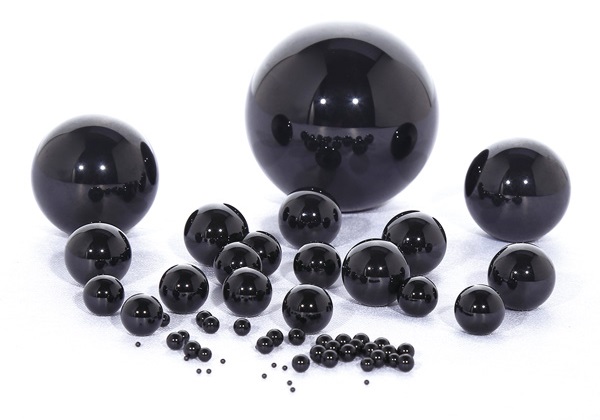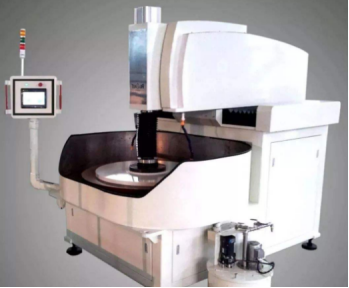Introduction of 4 Ultra-precision Machining Techniques for Si3N4 Balls
Silicon nitride ceramic ball (Si3N4) has many excellent properties, such as high hardness, wear resistance, low density and thermal expansion coefficient, as well as excellent high temperature resistance, non-magnetic, corrosion resistance, high thermal conductivity, self-lubrication and excellent thermal shock resistance, etc., so it has become the preferred material for bearing ball bearings under high temperature, high speed, high precision, and special environment.
Silicon nitride ceramic ball is widely used in wind turbines, high-speed precision spindles, high-temperature engines, and other fields. As the key basic element of the bearing in the important equipment, the ultra-precision grinding and polishing quality of the ball is an important factor affecting the performance and service life of the bearing. The ultra-precision grinding and polishing technology of silicon nitride ceramic balls is briefly introduced below.
The ultra-precision grinding and polishing technology of Si3N4 ceramic ball mainly includes magnetohydrodynamic polishing, chemical mechanical polishing and ultrasonic assisted polishing. These new "flexible" machining techniques enable the micro-cutting of Si3N4 ceramic ball surface materials, allowing the excess to be removed by means of plastic fracture to obtain a super-smooth non-damaged surface.

Magnetohydrodynamic polishing
Magnetohydrodynamic polishing is usually made by adding colloidal Fe3O4 into an abrasive mixture with a volume percentage of 5-10%. Si3N4 ceramic ball blank is placed in a cylindrical grinding disc filled with a mixture of magnetic fluid and abrasive, under which is a row of permanent magnetic poles. Under the action of the magnetic field, the magnetic particles move towards the direction of the strong magnetic field and produce the reverse buoyancy on the abrasive, which makes the abrasive suspended in the magnetic fluid. When the driving shaft rotates, the ball billet rotates in the mixture of magnetic fluid and abrasive while revolving around the grinding disc, and the abrasive suspended in the magnetic fluid polish the ceramic ball. The ball blank of silicon nitride ceramic ball is subject to less pressure (about 1N/ ball) and is elastic, which greatly reduces the scratches and micro-cracks on the surface of the ceramic ball caused by mechanical grinding.
The material removal rate of the spheres using magnetohydrodynamic polishing can reach 12μm /min, which is more than 40 times that of the spheres using magnetic fluid polishing. The experiments show that the sphericity can reach 0. 14 μm and the surface roughness can reach 0.01μm after 3h processing.
Chemical mechanical polishing
Chemical mechanical polishing has been widely used in the ultra-precision machining of various engineering ceramics, functional ceramics such as yttria stabilized zirconia, and metal materials. During polishing, the nano-level soft abrasive particles suspended in the liquid medium produce high temperature and high pressure due to friction at the contact point with the Si3N4 ceramic ball, and produce a chemical reaction in a very short time, generating a new material softer than the workpiece material and easier to remove. The reaction product was removed by the mechanical friction between Si3N4 ceramic ball and the subsequent abrasive and polishing disc in the unit of 0.1nm, so as to obtain super-smooth surface.
At present, researchers use water-based cerium oxide polishing solution to perform chemical mechanical polishing on silicon nitride ceramic balls and obtain a smooth surface with roughness Ra of 4 nm.

Ultrasonic vibration assisted polishing
Ultrasonic vibration assisted polishing is a kind of machining method that combines ultrasonic vibration and mechanical machining. Some researchers increased the ultrasonic torsional vibration at the upper grinding disc, and the processing speed was 2~3 times higher than the traditional way in the rough grinding stage. In addition, the researchers also combined magnetorheological polishing technology with ultrasonic technology to polish Si3N4 ceramic balls, and the results showed that the material removal rate was higher than that without ultrasonic vibration, and the surface Ra value of Si3N4 ceramic ball polished by ultrasonic vibration decreased from 0.260μm to 0.025μm after 1 hour.
Cluster magnetorheological polishing
In order to realize the high-efficiency machining of high-precision ceramic balls, a research team proposed a new technology of cluster magnetorheological polishing ceramic balls, in which multiple small magnetic objects are arranged in a regular way on the back of the upper and lower polishing discs made of non-magnetic materials. When the magnetorheological polishing fluid is injected into the polishing disc, cluster magnetorheological effect polishing pad will be formed above the magnetic pole. The cluster magnetorheological effect polishing pad formed on the surface of the upper and lower polishing disc will be used to cover the ceramic ball and polish it. There is a certain gap between the upper and lower polishing discs in the cluster magnetorheological polishing mode. During processing, the rigid contact is changed into flexible contact because the magnetorheological polishing pad is always covered with ceramic balls, which greatly reduces the secondary deformation caused by grinding impact and heating. The team developed a cluster magnetorheological polishing ceramic ball testing device and carried out polishing and processing experiments of silicon nitride ceramic balls.
The cluster magnetorheological polishing technology has the advantages of good polishing effect, high efficiency, and no subsurface damage, etc., which can greatly improve the polishing efficiency of si3n4 ceramic balls while guaranteeing the surface quality and shape accuracy.
About The Author
Cathie Montanez is the Project Scientist of Stanford Advanced Materials (SAM). She once served as a research professor at university's school of materials science and engineering, and now is responsible for the performance testing and technical guidance of SAM's products such as refractory metals, ceramics, laboratory crucibles, and grinding bars, etc.









